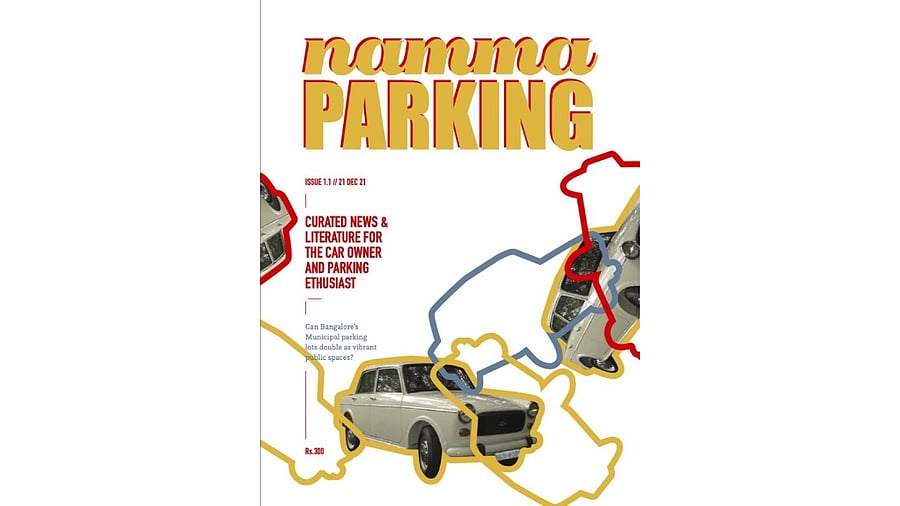
Can parking lots be a site for arts and culture? A new magazine featuring two public parking spaces in Bengaluru explores the idea.
‘(Our) Parking Magazine’ is an annual publication dedicated to urban parking. The first edition is titled ‘Namma Parking’ — it focuses on BBMP parking lots
in K R Market, and J C Road.
This is a project by 23-year-old Radha R H, based in Bengaluru. She has studied public space design and works as a product designer.
Fewer than 100 have sold since the inaugural edition dropped in December. But the feedback from buyers — architects, urban planners and long-time Bengalureans — has been better as they wanted to know she could generate so much content on parking, an unlikely subject.
In the 44-pager, Radha asks if public parking spaces can serve as venues for events (related to music, art or food) during non-peak hours. This may make them a safer and more lively place to access like metro stations. Currently, their male-dominated vibe is “slightly exclusionary”.
“Please don’t stay back here after the sunset,” a shopkeeper around the K R Market parking lot advised Radha during her recce.
“He was concerned about my safety but I felt that was because I looked ‘different’ from the women vendors who use the parking lot as late as 10 pm,” she says.
Radha admits her first visit to the K R Market parking lot made her uneasy. “It was flooded, it had cobwebs… But the more I visited, I grew familiar with the place. Parking attendants would share chai with me,” she recalls.
Parking lots are a den of stories, she would soon discover. “A man told me he once saw a blinding light at the J C Road parking lot. He was so shocked that he was bedridden for two months. I don’t know if it is true,” she laughs.
Elderly men meet friends here, children play cricket, cleaners eat lunch, vendors load and unload their wares, she saw. She also heard upset accounts about the lack of safe parking.
Other articles feature ‘No parking signs’ around Bengaluru, Google reviews of these parking lots, an explainer of Bengaluru’s parking policy, a review of ‘Rethinking A Lot’, a book on the design and culture of parking, and guest perspectives on the issue.
“Only when you know what your parking spaces are like can you begin to imagine what they could become,” she says.
“These parking lots, I gather, are run by families. While I think it (the model) brings ownership and facilitates smooth functioning, a fear of monopolising the space is also there,” she illustrates.
To contribute to the magazine or order a copy (Rs 300), visit ourparking.net
